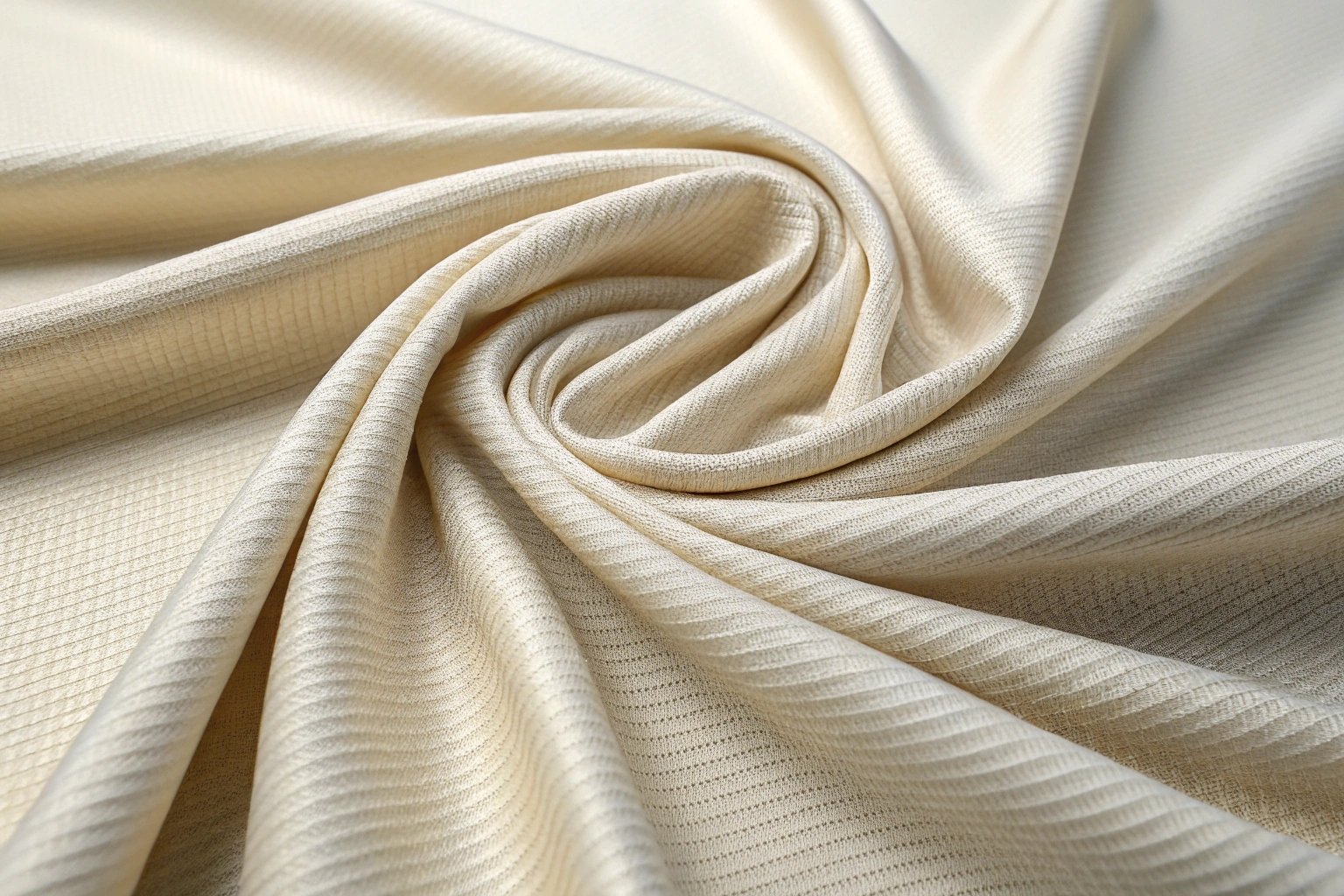Tricot fabric has quietly become a go-to choice for designers working in performance wear and lingerie. With its smooth texture, strong elasticity, and moisture-wicking features, tricot isn’t just functional—it’s foundational. It brings together comfort, flexibility, and durability in a way that few other fabrics can match.

In this guide, I’ll explore the performance features, care needs, use cases, and sustainability value of tricot fabric—especially in the context of athletic wear and intimate apparel.
What Makes Tricot Fabric Unique?
Tricot is a type of warp-knit fabric typically made from synthetic fibers like nylon or polyester. What sets it apart is its tightly knit construction that still allows for excellent stretch in multiple directions. When you touch tricot, you’ll notice how soft and smooth it feels—almost like a blend of silk and spandex. This texture makes it comfortable against the skin, which is why it’s used in garments that require direct contact, like bras or sports leggings.
It’s not just about comfort. Tricot’s surface also has a slight sheen, giving it a polished look even when used in casual or performance gear. Because of its knit structure, it doesn’t unravel easily and holds up well after many washes. In a fashion industry focused on both performance and longevity, tricot hits the sweet spot.
How to Care for Tricot Garments the Right Way
To keep tricot garments in good condition, proper care is essential. The fabric’s synthetic fibers can be sensitive to heat and abrasion, so the washing and drying process needs attention.
Use cold to lukewarm water and a gentle cycle in the washing machine. Avoid harsh detergents or fabric softeners, as these can degrade the fibers over time. It’s best to air dry tricot garments to preserve their elasticity and prevent heat damage. If you must use a dryer, set it to low heat. Tricot is naturally wrinkle-resistant, so ironing is rarely needed—but if required, keep the iron on a very low setting.
Identifying Tricot by Look and Feel
There are a few telltale signs that what you’re touching is tricot. First is the smooth, almost glossy surface, which stands in contrast to the ribbed texture of other knit fabrics. The second is its stretch. Tricot can stretch both horizontally and vertically, which makes it behave differently from woven materials or even some single-knit fabrics that stretch in only one direction.
If you hold it up to the light, tricot usually has a very fine, consistent weave that doesn’t show large gaps or loops. This gives it a compact feel that’s well-suited for close-to-body garments like yoga pants, sports bras, and shapewear.
Where Is Tricot Used in Apparel?
Tricot’s flexibility and strength have made it a favorite in several apparel categories. In activewear, it provides the stretch and moisture control athletes need during high-performance activities. For example, running shorts made from tricot won’t sag, bunch, or stay wet from sweat—key to comfort and movement.
In intimate apparel, tricot is used in bras, panties, and slips where close fit and softness are essential. It molds well to the body, doesn’t irritate the skin, and holds its shape, even with repeated wear. The same properties make it ideal for shapewear, where compression, stretch, and smooth lines are required. More recently, fashion brands have also adopted tricot in casual dresses and tops for a sporty-yet-polished look.
Why Tricot Works So Well for Sportswear
When designing performance gear, you want a fabric that moves with the body, dries quickly, and holds up over time. Tricot checks all those boxes. Its breathability allows for air circulation during intense workouts, while its ability to wick moisture away from the skin prevents discomfort.
The stretch is another major advantage. Unlike stiffer performance materials, tricot allows for full-body movement, which is critical for activities like yoga, Pilates, or high-intensity training. Because it’s also quick to dry, it keeps the body from overheating, and it minimizes the risk of irritation or chafing.
Is Tricot a Sustainable Fabric Option?
Sustainability in textiles is now more important than ever, and tricot has potential in this area. Many manufacturers now produce tricot using recycled polyester or nylon, often sourced from post-consumer waste like plastic bottles or fishing nets. This makes tricot a more eco-conscious choice compared to virgin synthetic fabrics.
Its durability also plays a role in sustainability. A long-lasting garment means fewer replacements and less textile waste. Since tricot doesn’t pill, fray, or stretch out of shape easily, it supports slow fashion values by promoting quality over quantity.
Conclusion
Tricot fabric is more than just a sportswear staple—it’s a high-performance, high-comfort textile that works across fashion categories. Its stretch, breathability, and soft texture make it ideal for intimate wear, while its durability and moisture management make it perfect for athletic clothing. For brands looking to combine comfort, style, and longevity, tricot is a smart fabric choice that supports both performance and sustainability goals.

